Dr Aini Hasanah Abd Mutalib
“Mother earth has music for those who listen”.
And listen carefully, we must, to discover treasures and beauty in the forest, and for the future of all living species on this planet.
Thanks to the field of bioacoustics, we can now study sound in living organisms, from the molecular to the ecological. This fascinating and interdisciplinary field explores how sound affects and is affected by life - and thus, helps us understand the diversity, behaviour, communication, and evolution of animals and plants, as well as the impact of human activities on natural sounds.
From the morning duet of gibbons in the forest to whale sonars, the performance of animals great and small can help us maintain the health and sustainability of the earth.
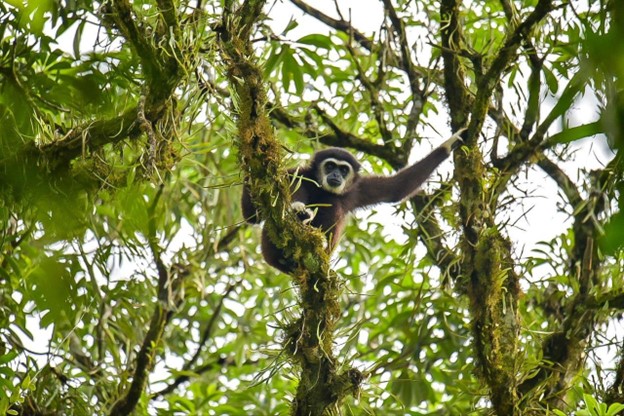 Figure: Lar gibbons, or scientifically known as Hylobates lar, is one of the three species of small apes in Peninsular Malaysia (Credit: Syimir Azim/ Project SoundsKape).
Figure: Lar gibbons, or scientifically known as Hylobates lar, is one of the three species of small apes in Peninsular Malaysia (Credit: Syimir Azim/ Project SoundsKape).
 Figure: Spectrogram of lar gibbons (Hylobates lar) in Kenyir
Figure: Spectrogram of lar gibbons (Hylobates lar) in Kenyir
 Figure: Bioacoustics is a tool that could be a stepping stone for more research and discovery for wildlife and habitat conservation.
The Trail
Figure: Bioacoustics is a tool that could be a stepping stone for more research and discovery for wildlife and habitat conservation.
The Trail
Never in my wildest imagination did I think my research work with primates and small apes at Universiti Malaysia Terengganu (UMT)’s Institut Biodiversiti Tropika dan Pembangunan Lestari would lead me someday to another corner of the world.
The
K Lisa Yang Center of Conservation Bioacoustics (CCB) located at Cornell University’s Lab of Ornithology is one of the world’s most renowned institutions in this domain. Its mission is to “collect and interpret sounds in nature by developing and applying innovative conservation technologies across ecologically relevant scales to inspire and inform the conservation of wildlife and habitats.”
For over two decades, the CCB has supported researchers from all over the world with technical know-how, progressive research methodologies and education. Here,I was privileged to connect with some of the best minds on the planet - who were listening to a large variety of animals and plants to unlock hidden secrets of our natural world.
At the nucleus of bioacoustics research
The week I arrived in the spring of 2023 coincided with the Lab of Ornithology’s Advisory Council Meeting. Here, we discussed research gaps, findings, and ways for the lab to move forward. I learned that a section for Capacity Building in the CCB is working to reduce knowledge gaps in bioacoustic in certain species’ ranges and habitats, in countries such as Malaysia and Indonesia.
With the guidance of 42 staff members at the CCB which included post-doctorate and doctoral students, administrative and technical support personnel, I learned how to annotate sound samples, and strategically and systematically arrange data collection using their
algorithm research and modelling method capable of producing complex models. The one-stop centre for bioacoustics had data from before the 1950s!
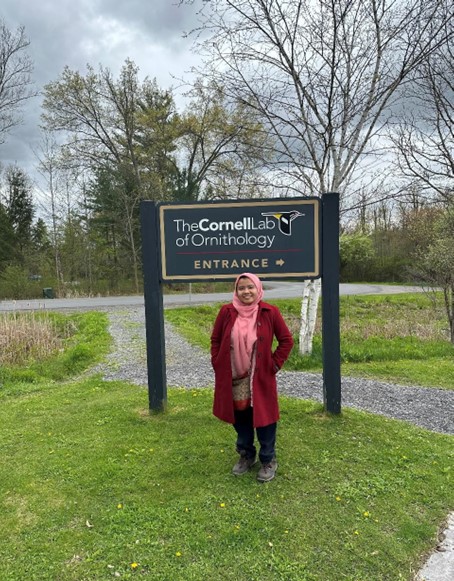
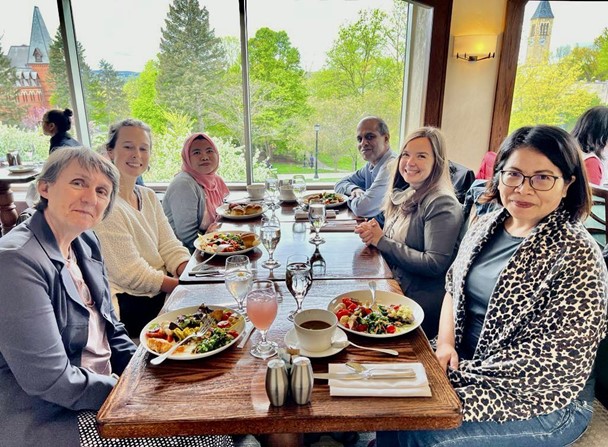
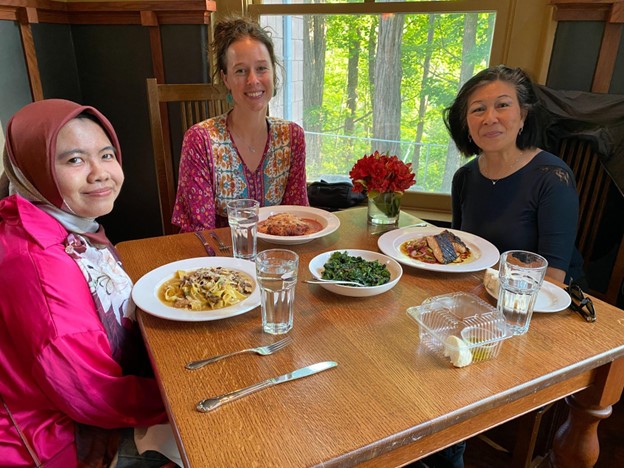 Figures: In front of K Lisa Yang Center of Conservation Bioacoustics and colleagues from Southeast Asian Program (SEAP) and K Lisa Yang Center for Conservation Bioacoustics, also joined by visitors from Universiti Malaysia Sarawak.
Figures: In front of K Lisa Yang Center of Conservation Bioacoustics and colleagues from Southeast Asian Program (SEAP) and K Lisa Yang Center for Conservation Bioacoustics, also joined by visitors from Universiti Malaysia Sarawak.
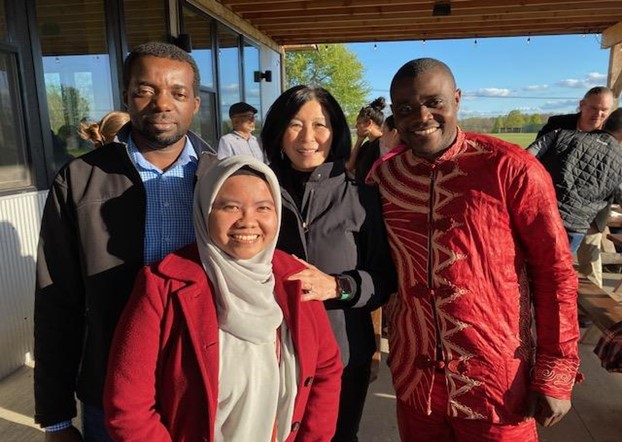 Figure: With folks from The Elephant Listening Project, and Lisa Yang, the remarkable woman and founder of K Lisa Yang Center for Conservation Bioacoustics (CCB). Meeting these leaders was a humbling experience.
Figure: With folks from The Elephant Listening Project, and Lisa Yang, the remarkable woman and founder of K Lisa Yang Center for Conservation Bioacoustics (CCB). Meeting these leaders was a humbling experience.
Being attached to a global top-ranked university was somewhat overwhelming, yet it also gave me a greater sense of intrigue and motivation. I had heaps to learn from the highly accomplished, skilled and experienced “Yangsters” about their many research and conservation efforts - from listening to elephants, whales and more!
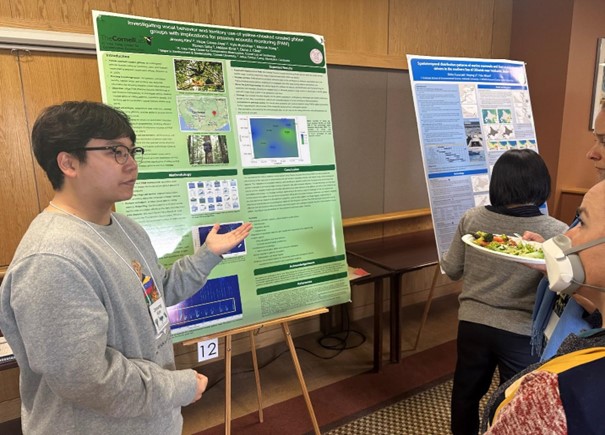
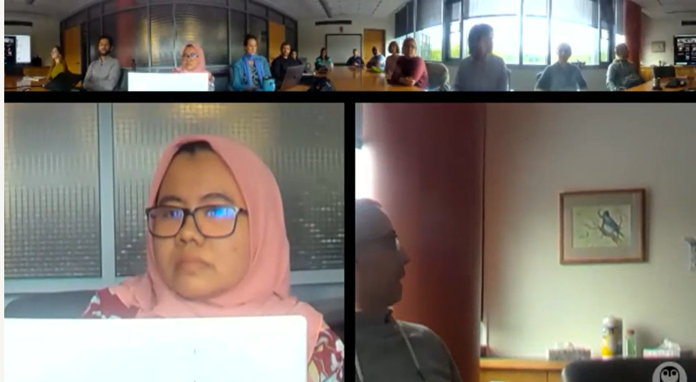
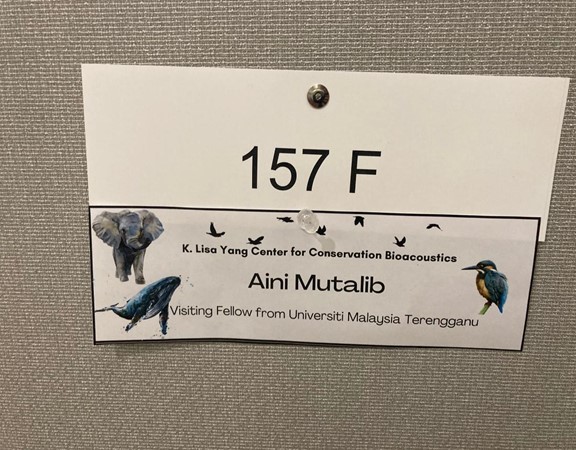
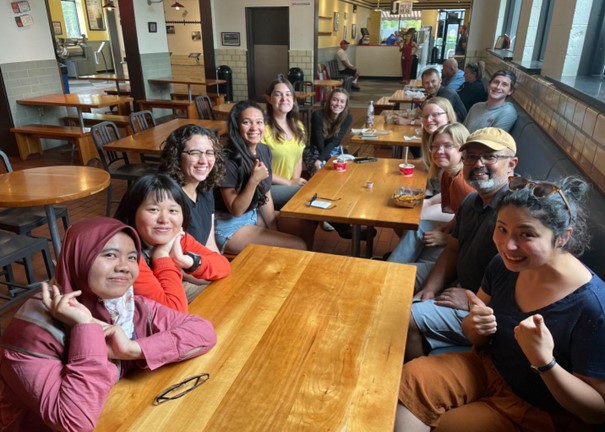 Figures: At the Advisory Council Meeting, undergraduate and post-graduate students from the university supported by CCB are encouraged to present their papers. I presented my primatology journey, and how the Merdeka Award contributes to furthering this. My ID tag and chilling with my lab mates.
Figures: At the Advisory Council Meeting, undergraduate and post-graduate students from the university supported by CCB are encouraged to present their papers. I presented my primatology journey, and how the Merdeka Award contributes to furthering this. My ID tag and chilling with my lab mates.
While in the US, I also attended the Acoustical Society of America Congress Meeting in Chicago. This meeting gathered experts from many related acoustic areas - including biodiversity, music, engineering and more. Most of the acoustic studies presented here were related to bats and marine mammals. Much was discussed about integrating machine learning with the sounds of wildlife - which is a rather new topic for me, and one that will play an important role in future studies.
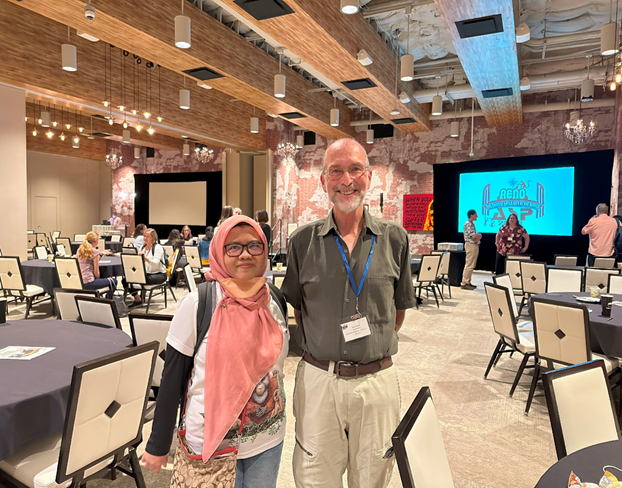 Figure: With Paul Garber, the elect-president of American Society of Primatologist (ASP)
Figure: With Paul Garber, the elect-president of American Society of Primatologist (ASP)
At the American Society of Primatologists (ASP) conference in Reno, Nevada a few weeks later, topics were more primate-related. As a past recipient of ASP’s ‘Saving Primates Where Primates Live’ grant, I had the chance to talk about my work as the chairperson of the Malaysian Primatological Society and invited them to the Joint Congress Meeting 2023 in Kuching!
Additionally, I had the honour to work with and co-organize a bioacoustic workshop with Dena Clink, a research associate at CCB, given her expertise in bioacoustics and the Bornean gibbon.
I also joined the Bioacoustic Equipment and Training (BEAT) Program for Malaysia and Indonesia, will serve as a co-ordinator for this two-year programme.
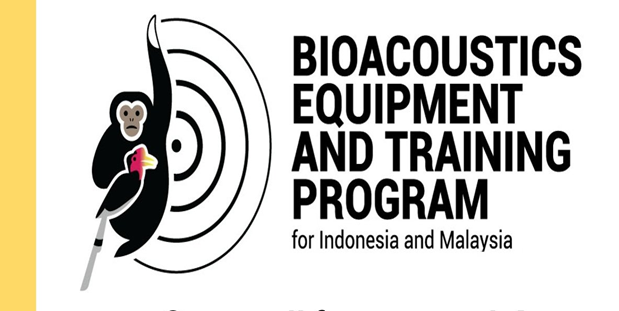
Over my three-month attachment period, I realised that so much exploration and discoveries remain before us in the realm of bioacoustics.
The progressive research environment here has given me inspiration to improve my work - to empower others to discover the world of bioacoustics. As such, I am now part of the Symposium of Indonesian-Malaysian Bioacoustics, which has been set up in collaboration with the K Lisa Yang Center for Conservation Bioacoustics. We are also starting a mentorship programme for migratory bird bioacoustic research in Malaysia.
As Ezra Cornell had once said,
“I can’t save the world alone, but I can focus the center’s strategy on translational science. So this gift is about technology as a means to conserve biodiversity and to invest in and empower people living in areas of immense biodiversity, essentially the lungs of the earth.”
Connecting the Sounds of Nature with Citizen Science
Adjacent to the
Cornell Lab of Ornithology where the CCB is situated, is a small park that connects the neighbourhood to the lab, called the Sapsucker Trail. Every weekend, the Lab of Ornithology organises a citizen science program where the community is invited to learn how to spot and listen for birds.
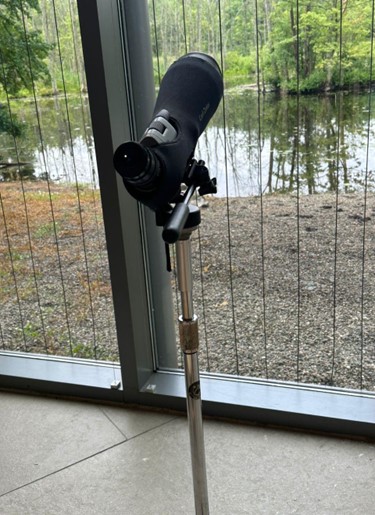
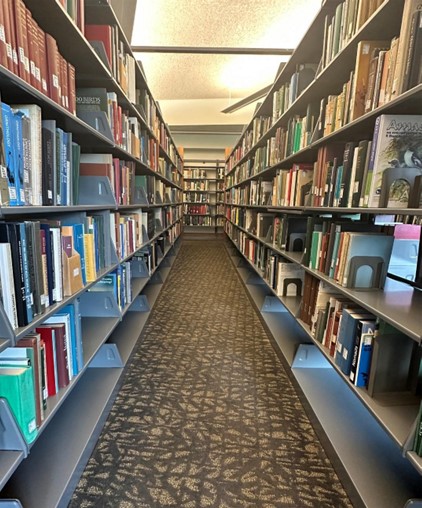
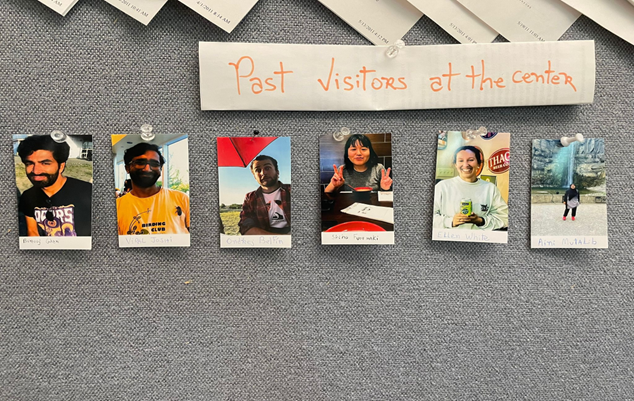 Figures: The Lab of Ornithology allows visitors to learn about birds and bioacoustics, such as information boards, books, a public library and digital scopes. Figure : Hall of Fame for visitors of the Yang Center
Figures: The Lab of Ornithology allows visitors to learn about birds and bioacoustics, such as information boards, books, a public library and digital scopes. Figure : Hall of Fame for visitors of the Yang Center
I was also thrilled to observe how the CCB and Cornell University support those with differing abilities and backgrounds in embracing and advancing the sciences. This approach for inclusivity and diversity runs parallel with my research, known as
Project SoundsKape (
https://projectsoundskape.com/).
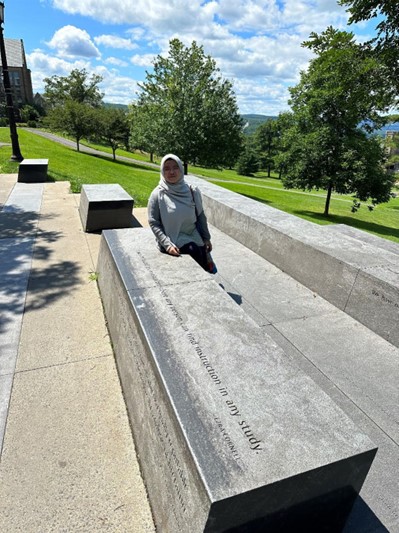 Figure: Significant quote from Ezra Cornell that reflects inclusivity and diversity in learning at Cornell University
Figuring A Way Forward
Figure: Significant quote from Ezra Cornell that reflects inclusivity and diversity in learning at Cornell University
Figuring A Way Forward
John Muir, a famous naturalist and conservationist once said: “
The clearest way into the Universe is through a forest wilderness.”
I have been privileged to connect with some of the best minds on the planet - who were listening to a large variety of animals and plants to unlock hidden secrets of our natural world.
The town of Ithaca also presents many waterfalls and state parks for recreational activities, especially for hiking and running. Most of all, it has been a model location for discovering a clearer way forward, with the sounds of nature.
The wilderness doesn’t need to be a scary place if we listen well and work together. In this, collective participation from the local communities and government agencies, NGOs, GLCs and research institutes will be a game changer for wildlife conservation in Malaysia.
Together, we can ensure our habitat can be sustained, and the symphony of gibbons, birds, frogs, insects and wildlife can always be heard.
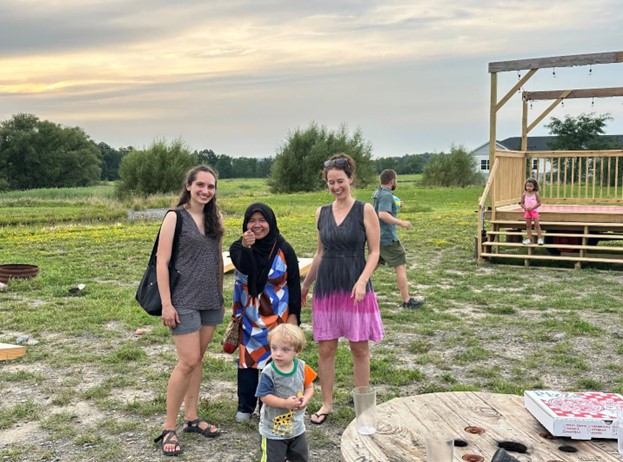
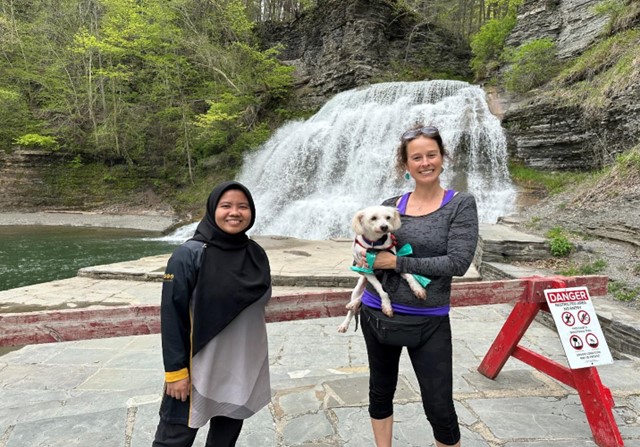
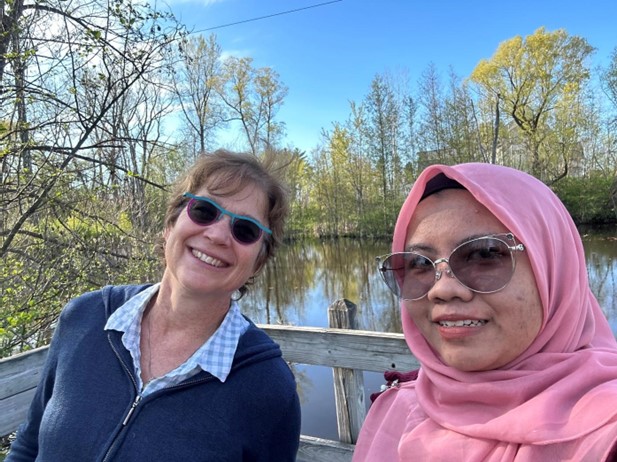
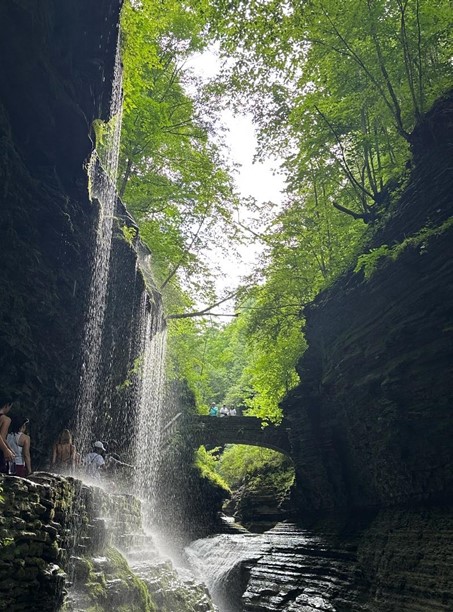 Figures : With Laurel Symes, the assistant director of CCB and Dena Clink, my host at the CCB.
Figures : With Laurel Symes, the assistant director of CCB and Dena Clink, my host at the CCB.
With Dena Clink, after a brisk walk at Robert H, Treman State Park; and with my housemate, Kat Caldwell at the Sapsucker Trail, a picturesque view of Watkins Glen, New York.
A Note of Thanks
The Merdeka Award Grant for International Attachment has opened up opportunities for me to better understand more distinctive characteristics concerning bioacoustics.
I am thankful for my family, friends and colleagues, especially current director AP Dr Amirrudin Ahmad, and previous director Prof Marzuki Ismail, who allowed me to participate in the research attachment. I was also supported by my former supervisor and mentors, Dr Nadine Ruppert and Dr Susan Lappan, as well as Dr Dena J Clink and friends from the K Yang Centre for Conservation Bioacoustics at Cornell University. My attachment was also made possible by friends who provided many photos and videos of gibbons, including the amazing sounds they make in the morning.
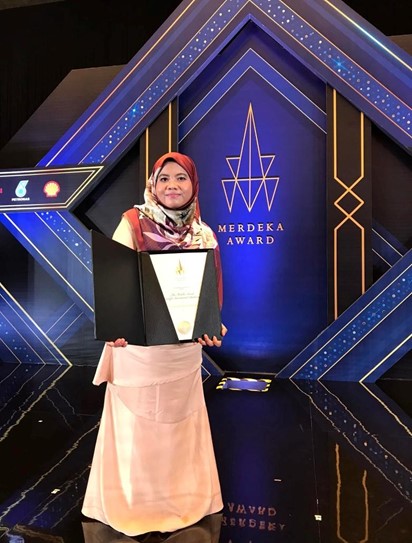 Figure : At the Merdeka Award Grant for International Attachment presentation ceremony in 2021.
Figure : At the Merdeka Award Grant for International Attachment presentation ceremony in 2021.